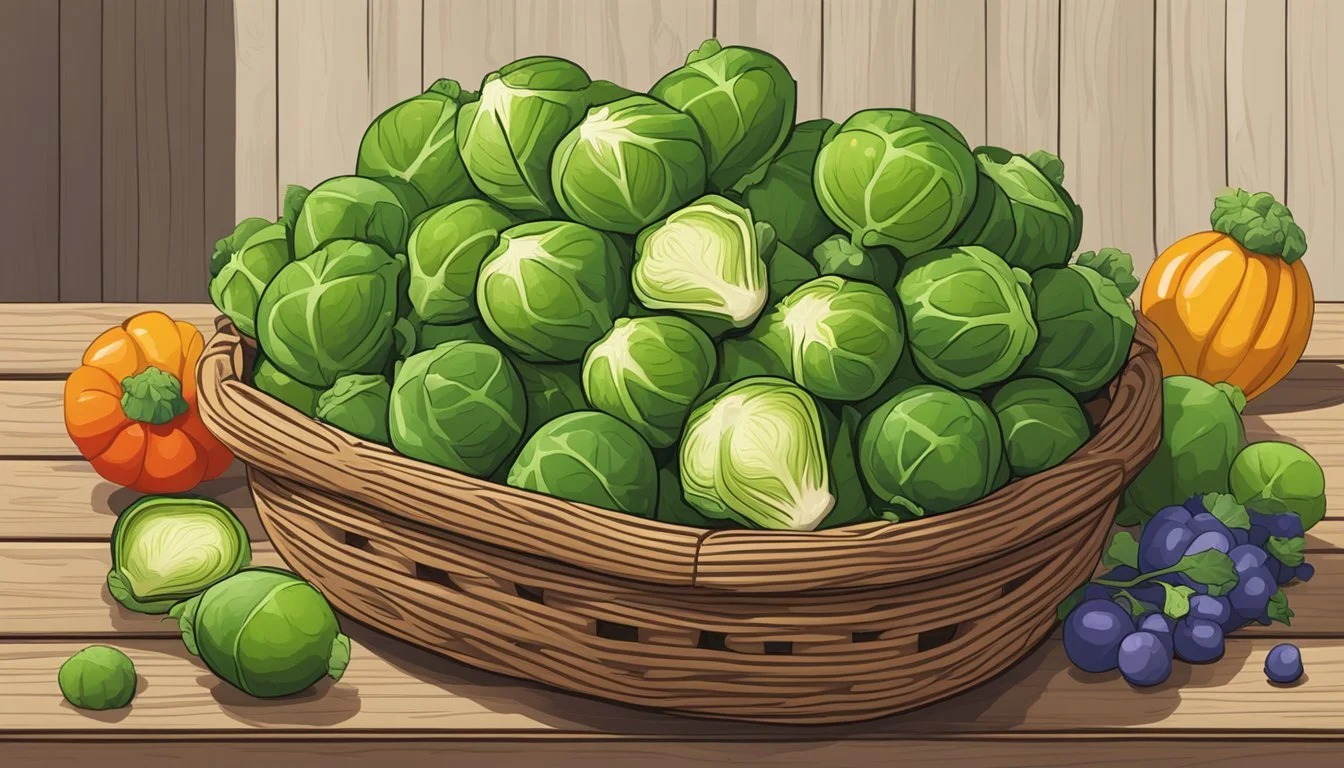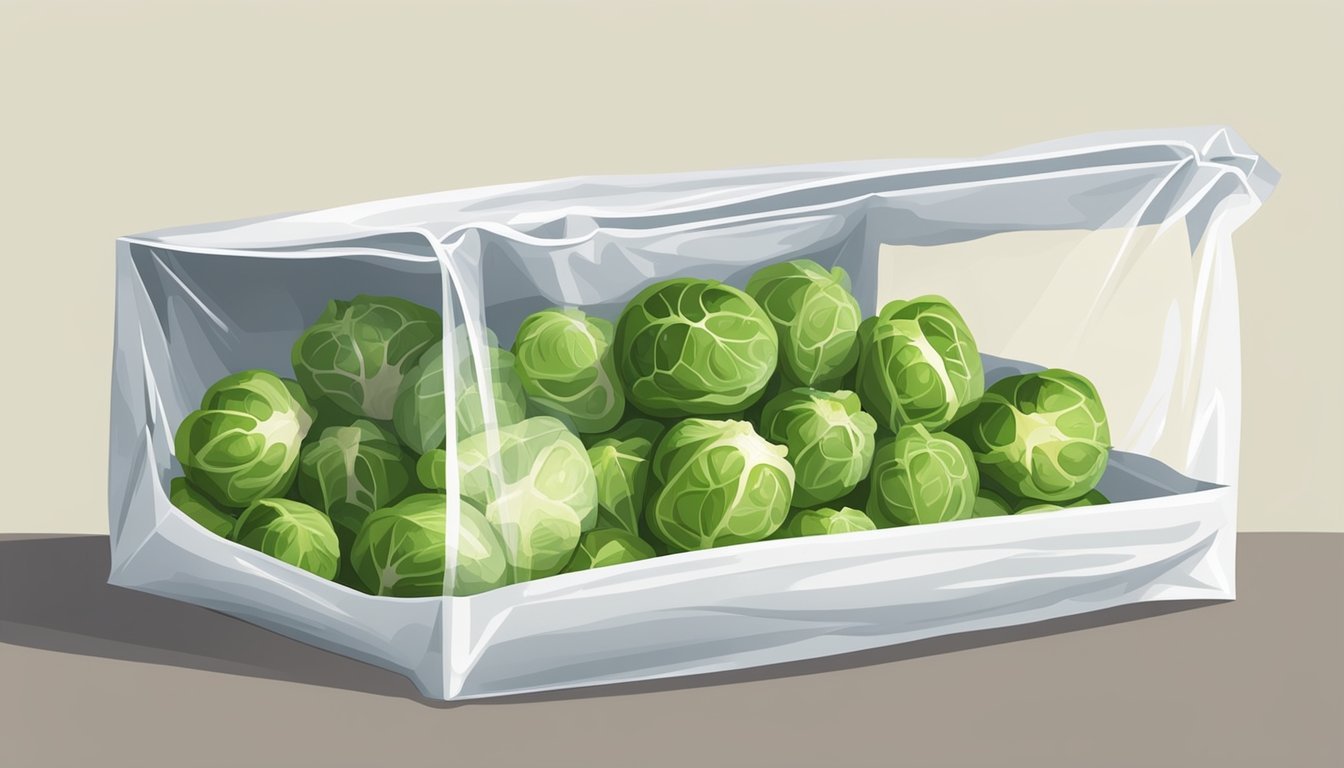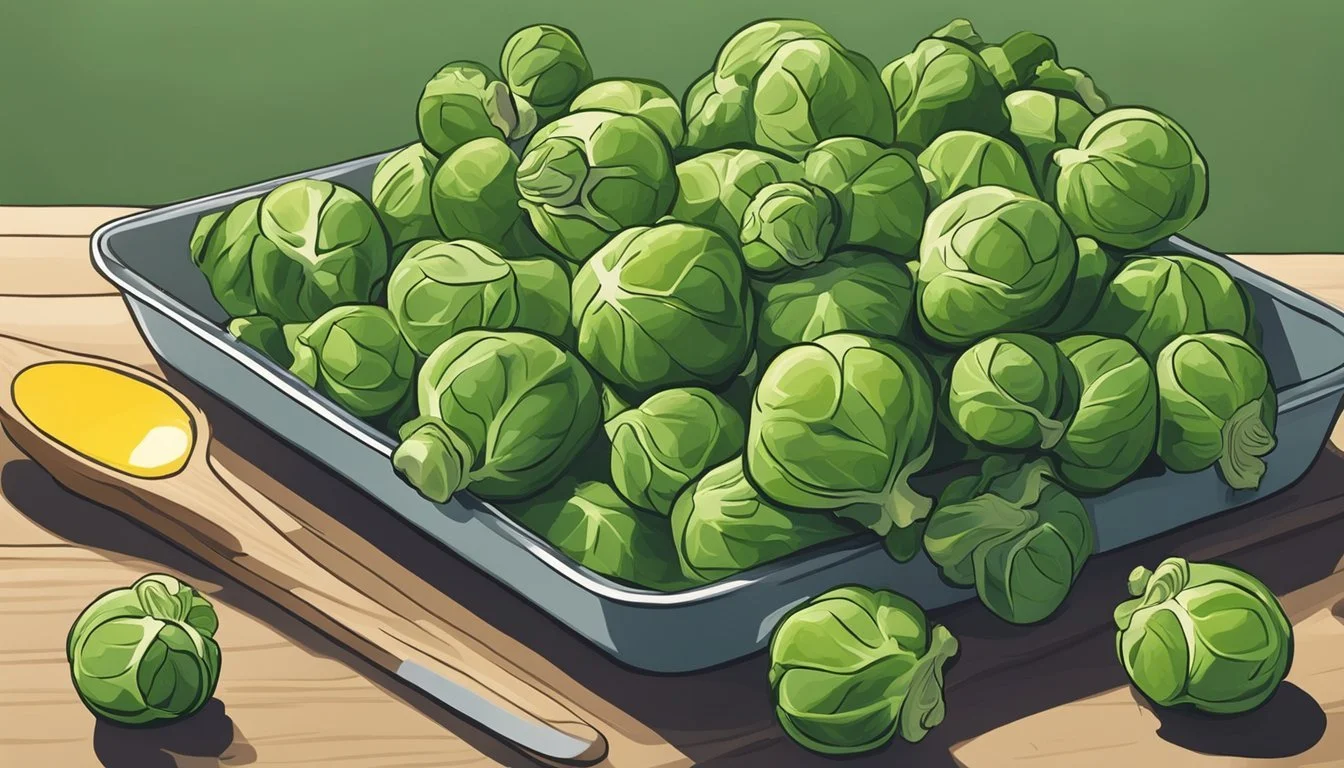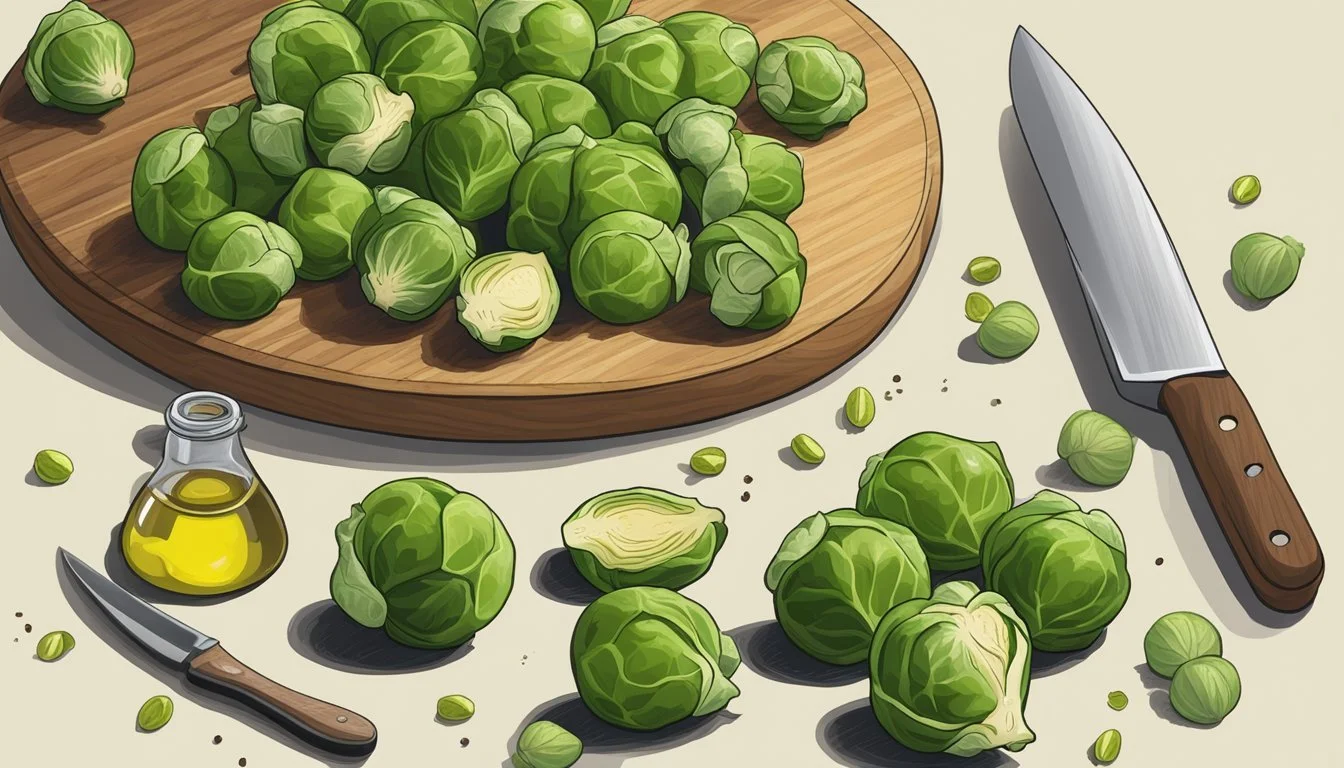How Long Do Brussels Sprouts Last?
Shelf Life and Storage Tips
Brussels sprouts (how long do brussels sprouts last?), a staple in the vegetable aisle, are known for their distinctive flavor and nutritional benefits. Their shelf life varies depending on several factors including how they're stored and whether they're sold on the stalk or have been picked. In the refrigerator, Brussels sprouts can remain fresh for about a week, whereas those purchased on the stalk may stay fresh for up to three weeks when properly stored.
For long-term preservation, freezing Brussels sprouts is an effective method. When frozen after blanching to retain their quality, Brussels sprouts can last for up to a year. It's essential to note that freshness also impacts taste, with newly harvested Brussels sprouts offering a sweeter flavor which can change over time.
Recognizing when Brussels sprouts have gone bad is straightforward. Signs include yellowing leaves, brown spots, and a soft texture. It’s important to inspect Brussels sprouts for these signs of spoilage before use to ensure the best culinary experience and to maintain food safety.
Selection and Initial Preparation
When choosing Brussels sprouts, it's essential to look for vibrant green color and firm texture. Proper washing and trimming enhance their quality and taste, and help maintain the nutrients they offer, such as fiber, vitamins, and folate.
Identifying Fresh Brussels Sprouts
Fresh Brussels sprouts should have a bright green color and be firm to the touch. The leaves that surround the sprout should be tightly packed, and there should be no signs of wilting. They should feel heavy for their size, indicating a high moisture content, which can contribute to a sweeter taste upon cooking. Look for sprouts of similar size to ensure consistent cooking times. If any yellow or brown spots are present, or if leaves are excessively loose, those sprouts may be past their prime.
Washing and Trimming
Before using Brussels sprouts, they require proper washing and trimming to ensure cleanliness and remove any damaged outer leaves. Follow these steps:
Wash: Rinse the Brussels sprouts under cold running water to remove any dirt or residue from the farm.
Trim: Using a knife, trim off the bottom stem, especially if dry or yellowed. It's important to cut just enough to remove the stem without cutting too deep, as to not lose too many of the inner leaves.
Outer Leaves: Gently remove and discard any yellowed or blemished outer leaves to expose the fresher, greener leaves underneath.
Performing these steps will not only prepare the Brussels sprouts for further cooking but also will help maximize their nutritional value by preserving the vitamins, fiber, and folate they contain. Buying Brussels sprouts that are fresh, and investing a bit of time in their initial preparation, significantly impacts their final quality.
Storing Fresh Brussels Sprouts
Proper storage methods are essential for maintaining the freshness and extending the shelf life of Brussels sprouts. Using the refrigerator, counter, or freezer can all be suitable methods depending on how long one intends to keep them fresh.
In the Refrigerator
Brussels sprouts should be stored in a plastic bag in the refrigerator's crisper drawer to maintain optimal freshness. Keeping them on the stalk can extend their shelf life. It's recommended to remove any wilted outer leaves to minimize excess moisture. They generally last about one week when stored correctly in the fridge.
On the Counter
Storing Brussels sprouts on the counter is not usually recommended, as room temperature can lead to quicker spoiling. Those looking to keep sprouts fresh should opt for refrigeration instead where the cooler temperature will slow the degradation process.
In the Freezer
For long-term storage, Brussels sprouts can be kept in the freezer where they can last up to one year. Freezing should entail blanching the sprouts first, then cooling them completely before placing into an airtight container or freezer bag. Labeling with the date of storage is a good practice to manage food storage effectively.
Determining Spoilage
When assessing Brussels sprouts for spoilage, close attention to their appearance, texture, and odor is crucial for determining quality and safety.
Signs of Aging
Brussels sprouts tend to show their age by changes in color and firmness. As they start to go bad, they may develop:
Brown or yellow spots: An indication they are past their prime.
Black spots: These can signal the beginning of mold growth.
It's important to note that while some spots may be trimmed away, extensive discoloration often means the sprouts are no longer of optimal quality.
Detecting Spoilage
Spoilage of Brussels sprouts is often detectable through:
Texture: Fresh Brussels sprouts have a firm and dense texture. When they become mushy or develop a slimy surface, this indicates bacterial activity and spoilage.
Odor: A strong or unpleasant smell can be a telltale sign. This odor is typically due to the release of gases from bacteria breaking down the sprouts.
Mold: Any visible mold growth, such as white, green, or black spots, is a clear indication that Brussels sprouts should be discarded to avoid health risks like food poisoning.
It's essential to recognize these signs to maintain food safety and avoid the potential for spoilage extending to other fresh produce.
Preparation Techniques
Proper preparation techniques are essential for maximizing the freshness and flavor of Brussels sprouts. Whether one opts to freeze or cook these nutrient-rich vegetables, methods such as blanching and various cooking approaches play a pivotal role.
Blanching Before Freezing
To preserve Brussels sprouts' taste and nutrients, especially vitamin C, blanching before freezing is recommended. Here is the process:
Wash the sprouts thoroughly.
Trim off the stem ends and remove any yellowed or damaged leaves.
Boil water in a large pot and add the sprouts for about 3-4 minutes.
Transfer sprouts to an ice bath immediately to halt the cooking process.
Drain well, then pack into airtight freezer bags or containers.
Freeze blanched Brussels sprouts for up to 12-16 months.
Cooking Methods
Brussels sprouts can be steamed, roasted, fried, or braised. Each method offers a unique way to enjoy their flavor, while retaining most nutrients.
Steaming: They can be steamed over boiling water for 6-8 minutes until they are tender but still crisp, retaining most of their Vitamin C.
Roasting: For a caramelized flavor, roast halved sprouts at 400°F (204°C) for 20-25 minutes.
Frying: Sprouts can be fried until golden and crisp; this method may introduce more fat but adds a crunchy texture.
Braising: To braise sprouts, lightly fry them, then simmer in stock or another liquid until tender, which enhances their inherent sweetness.
Each cooking method will impart different qualities to the Brussels sprouts; the choice depends on personal preference and desired outcome.
Usage and Serving Suggestions
When incorporating Brussels sprouts into meals or reheating them for later consumption, one should consider the preparation method to maintain flavor and nutritional value.
Incorporating into Dishes
When planning dishes, one can enhance the taste of Brussels sprouts through roasting, which brings out a caramelized flavor, or by adding ingredients like bacon (how long does bacon last?) for a savory twist. These vegetables are versatile and can be shredded into salads, contributing to the dish's mineral content and texture.
Roasted Brussels Sprouts: Toss with olive oil, salt, and pepper; roast in an oven until they're browned.
Brussels Sprouts with Bacon: Cook bacon until crispy, remove, and in the same pan, cook the sprouts with a bit of the bacon fat.
Shredded Brussels Sprout Salad: Shred the sprouts finely and mix with complementary ingredients like nuts, cheese, and a vinaigrette.
Reheating and Storage
For cooked Brussels sprouts:
Reheating: Best done in an oven or on the stove to retain texture.
Oven: Reheat at 350°F until warm, which avoids additional browning.
Stove: Sauté on medium heat with a bit of oil or butter.
Concerning storage and reheating for frozen Brussels sprouts:
Freezing Brussels Sprouts: Blanching before freezing preserves flavor and texture.
Reheating Frozen Brussels Sprouts: Reheat directly in the oven or on the stove without thawing to prevent sogginess.
Proper reheating techniques ensure that Brussels sprouts remain appetizing while serving leftovers or pre-prepared meals.
Advanced Storage Tips
To maximize the shelf life and freshness of Brussels sprouts, it is crucial to understand and apply advanced storage methods meticulously.
Extending Shelf Life
Brussels sprouts can be stored effectively to extend their shelf life. When storing raw Brussels sprouts, one should keep them on the stalk as this helps maintain freshness for a longer period. Once detached from the stalk, they are best kept in an airtight container or sealed in a freezer bag if they are to be used within a few days. For extended storage, Brussels sprouts can be frozen. Blanching them prior to freezing is essential; this involves boiling for 3 to 5 minutes, followed by cooling them quickly in ice water. Once cooled, Brussels sprouts should be drained, dried, and placed in freezer bags before storing in the freezer.
Optimal Storage Conditions
Refrigerate Brussels sprouts to maintain optimal freshness. An unwashed and untrimmed state is ideal to prevent moisture build-up which can lead to spoilage. They are best kept in the crisper drawer of the refrigerator, where the environment tends to be more humid and cooler. Keeping Brussels sprouts dry and away from ethylene-producing fruits and vegetables is critical since exposure to ethylene can hasten decay. For cut or chopped Brussels sprouts, immediate use is recommended; however, if short-term storage is needed, they should be stored in a dry, sealed container and used within two days.







